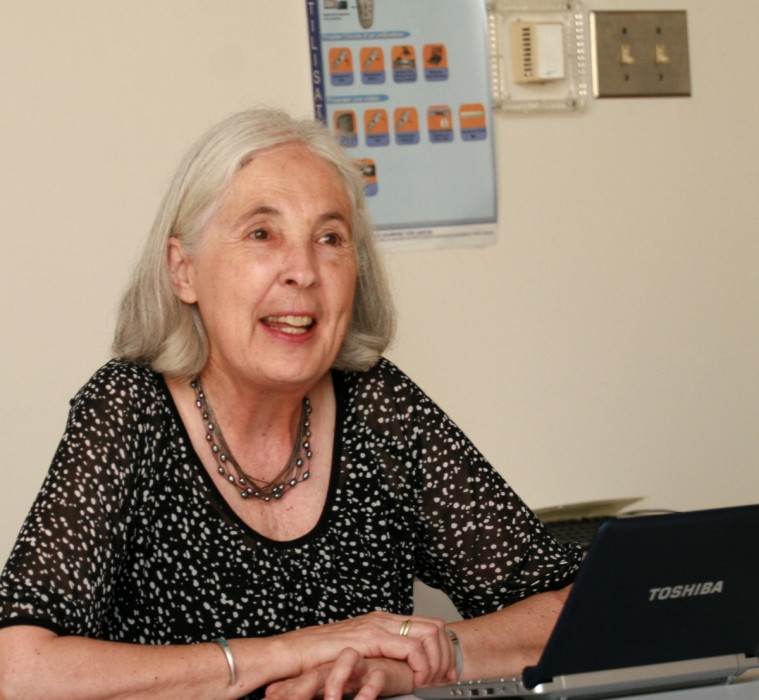
Writing for Change: The 8th generation
Professor and head of the department of Native studies Renate Eigenbrod believes in the transformative potential of creative writing, but it was her career in Indigenous literature, in particular, that brought her back to the power and the origin of story.
As part of a five year SSHRC funded project tracking the “8th Generation” of Aboriginal Canadians, Eigenbrod ran a day-long workshop in creative writing in April 2013, called “Writing for Change,” facilitated by the Indigenous Writers Collective of Manitoba.
Now some of the writing from that workshop has been compiled by Eigenbrod and Shayla Elizabeth in a book by the same name — with the proceeds donated to the Indigenous Writers’ Collective.
Her five year SSHRC Insight Grant on emergent Indigenous writers is “e-kiskakweyahk/we wear it”: postmemory and new memories in literature by Aboriginal authors of the Eighth Generation. In addition to the published literature created by a new generation of Aboriginal writers, Eigenbroad is also interested in lesser known, community-based literary activities.
“ki masinahikewin ka wi kwayaskatisiyak” — “we write so we can live honestly (or properly, in an honest manner, appropriately)”
The 8th Generation, Eigenbrod notes, comes from an Anishinaabe prophecy that “declares now is the time for Aboriginal peoples and the settler community to come together and build the ‘8th Fire’ of justice and harmony.”
This generation, she continues, is the one that has not gone to residential schools, “but grew up with stories about the school, and with that legacy.
“If you look at writing and the arts generally, then the question is ‘how does that shape them?’ That was my basic research question: How is the writing of the new generation shaped by stories about the residential schools? The concept is called ‘postmemory’ — something that’s been similarly applied to 2nd generation Holocaust survivors.”
Her hope that “we are in an important transformational phase in our history” is informed both by the prophecy and by the movements and shifts taking place within the Aboriginal and larger community — from the Truth and Reconciliation Commission to the Idle No More movement. In Winnipeg, the co-op initiative Neechi Commons recently opened downtown — and it was where Eigenbrod and her team decided to hold the workshop, signalling possibility along with this “place of change.”
 In her forward to the book, Eigenbrod writes:
In her forward to the book, Eigenbrod writes:
Beatrice Mosionier, who, as a writer, initiated change with her novel In Search of April Raintree but who also worked as a volunteer for Neechi Commons, reminds us in her statement “A Time to Write” of the social and political dimensions of writing. I was also encouraged by receiving a Social Sciences and Humanities Research Council (SSHRC) grant in support of the 8th generation of writers with a special focus on the role of creative writing in working through the legacy of residential schools. However, using creativity in order to deal with intergenerational trauma is not the only association with change. When I asked Anishinaabe scholar Niigaan Sinclair about a translation in Anishinaabemowin, he cited “gitigan” — “grow and mature,” as an expression for change; and when I asked Cree/Metis poet Duncan Mercredi about a Cree translation, he quoted his brother Joe who gave him the phrase: “ki masinahikewin ka wi kwayaskatisiyak” — “we write so we can live honestly (or properly, in an honest manner, appropriately).” These two translations both add a deeper level to the meaning of writing for change, and it is with these interpretations in mind that I read the contributions to this book.
Eigenbrod notes that in her volunteer role with Neechi commons, Mosionier, who is an accountant, advocated for “not only food for the belly but also food for the mind.” In addition to food and art, the co-op store carries a wide selection of Indigenous literature as well as educational resources.
Eigenbrod: “Indigenous voices have been silenced — one of the worst aspect of Colonialism — this has done a lot of damage.”
It’s in this spirit that Eigenbrod wanted the project to proceed. Among the reasons that writing and story are such powerful tools in social change, she notes, is the fact that story is both “non-threatening [for the audience] and empowering” for the aspiring writer, for other Aboriginal youth — and beyond. It allows the writer “to make sense of things in their own way.”
“Because the voices have been silenced — one of the worst aspects of Colonialism — this has done a lot of damage.”
Recently one of her Native studies students completed a creative writing master’s thesis. Leo Baskatawang choose the creative writing approach because “it allowed him to get away from the binary of good and bad, white and colonized, victimizer and victim,” as Eigenbrod explains.
“Not everyone is good or nice, but story helps others to understand where people are coming from. It’s about relationships — and truth, in a different way than conveyed in Social Sciences textbooks, seeing that not everyone’s the same; not simplifying, categorizing or labeling. It shows that there’s a wide variety of human interactions, which is our reality.
“Bringing that across was of interest to him,” she says.
— Mariianne Mays Wiebe
Read a story by workshop participant Theodore Syrette; “Assimilation Versus Adaptation” appeared in Writing for Change.
Copies of the book Writing for Change are available at the U of M bookstore.








